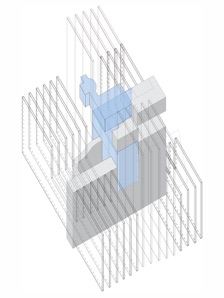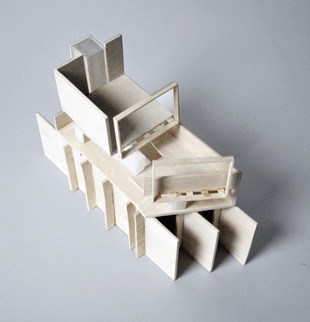DSGN6010/6020 + DSGN1100/1200
Summer Architecture Design Studio - Session II
DSGN6010/6020 + DSGN1100/1200
Summer Architecture Design Studio - Session II
Course Statement:
"The discovery of meaningful architectural order should occur in the realm of perception, through the operations of making, of "concrete poetry" or poesis, derived from the challenge of materials and techniques....... Embodied making, involving a mind in a body, its flesh, pleasure and pain, searching for an order rooted in history, perception and materiality, is the opposite of the construction of an object or building through the implementation of conceptual, methodological tools, and formalist or technological processes. The product might represent a technique in the first instance, but the personal techniques endowed with a theoretical and historical content, and implemented in the project as deliberate acts of discovery, will become pregnant with meaning."
Alberto Pérez-Gómez, MODERN ARCHITECTURE, ABSTRACTION, AND THE POETIC IMAGINATION.
poetic |pōˈetik| adjective.
of, relating to, or used in poetry: the muse is a poetic convention.
• written in verse rather than prose: a poetic drama.
• having an imaginative or sensitively emotional style of expression: the orchestral playing was colorful and poetic.
Architecture aims to evoke emotional and intellectual response through space, form and phenomenal qualities of physical construct. This segment of the summer studio examines the poetic nature of architecture through focused iteration. Through analytical transformation of building precedents, it aims to cultivate individual student awareness to the formal and spatial qualities of physical construct as they develop technical proficiency in the design process.

Go to archive Schedule Syllabus Roster Student Work +Courses
Learning Objectives:
a) ability to visually analyze building precedents through various representational methods (drawing and modeling)
b) ability to generatively synthesize critical disposition toward precedents through various representational methods (drawing and modeling)
c) ability to use various drawing types as a tool in the design and making process
d) understanding of the phenomenal qualities of materials and assembly
Media and Skills:
a)cardboard, chipboard, foam core sketch model making
b)crafted basswood/plexiglass model making
c)plaster cast and negative formwork making
d)digital diagraming
e)charcoal subtractive tones drawings
We will begin with a discourse on the poetic nature of architecture in conjunction with a series of skill forming analytical exercises. As a synthesis, construction of exquisitely crafted tectonic / stereotomic models will follow. A series of process diagrams and drawings will accompany the model, establishing the conceptual framework for the following studio segment.
“Performance” is an empirical process of improvisation and adjustment through trial and error, a self-discovery process. “Student Performance” in the studio is also evaluated as such. Disciplined, self-directed recovery from a spectacular error is valued over mediocre success merely following the instructions.
Studio Instructor: Kentaro Tsubaki
Media Instructors: S. Richards / S. Hurt
TA: M. Harris
Analysis/Synthesis Diagram: L. Rapier
Synthesis Model: A. Croft

